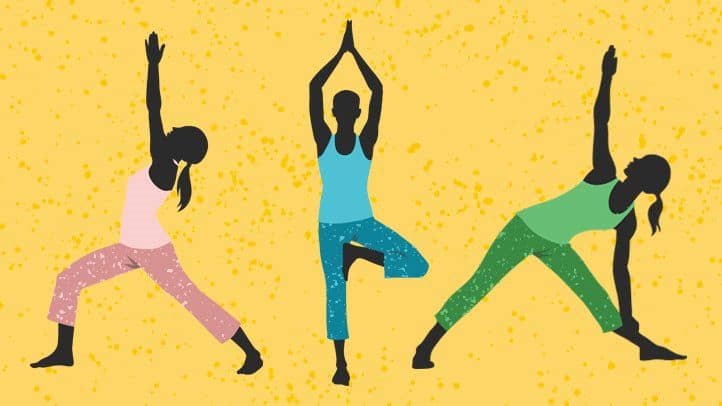Yoga - My Cultural Roots
By Vaasanthi Savaram
Yoga is a practice of physical, mental, and spiritual disciplines which aim to create harmony between the mind and body. It is used to heal, has been used worldwide, and has been seen spreading through many cultures. The benefits of yoga are limitless; they range from improving flexibility to creating mental calmness and clarity as well as boosting the immune system. There is no doubt that yoga has quickly gained popularity in the western world in the past century; however, yoga is known to be one of the oldest physical disciplines in the world, dating back over 5,000 years. The grip yoga has on the modern world today is all thanks to it’s origins and the unique ways it connects the human mind and body.
The word “yoga” is rooted in the Sanskrit language and translates to “union.” Its origin lies in the ancient Indian subcontinent and is first found in the sacred Hindu texts called the Rig Vedas. The Rigveda is a collection of over a thousand Sanskrit mantras and hymns and is one of the most sacred texts of Hinduism. The development and refining of yoga were done by Rishis, also known as sages, who then documented the practices and beliefs of the Upanishads. The Vedas introduced how to balance energy and control one’s breathing, the bases of yoga.
Although yoga’s origins are rooted in India, it quickly spread across the continent of Asia, which is how it eventually made its way into the western world. Through Buddhism, yoga spread across religions as well. Yoga focuses on the inner self, which made it easily adopted by Buddhism. Yoga spread to China because it is different from any other physical practice and is known to be everything between a monastery in a gym while building on the practice of mindfulness. As yogis and monks began to travel to Europe and the Americas, yoga had become introduced to the western world. Still, yoga’s modern popularity is due to the influx of Asian American immigrants who brought their cultures with them in the late 20th century.
Today yoga has changed from when it originated but continues to have the same benefits on the human body as it did centuries ago. Yoga is primarily connected to spiritual well-being and intelligence, creating a more positive outlook on life and being a part of Hinduism and Buddhism. It is not a religious practice, allowing it to be practiced by anyone. The sacred chant ‘Om’ is used and is said to echo the sound of harmony in the universe. On top of the spiritual connection, yoga has unique physical benefits; it improves brain health, helps manage weight, can strengthen bone and muscle, and reduce the risk of disease. The most important thing it brings is the inner peace most people find changes in their lives once they begin yoga.
A practice created centuries ago continues to change lives and evolve from when it was first created. Yoga has endured the test of time, and it’s still regarded for its unique qualities and has become part of the western culture. However, many don’t realize the origins and importance behind yoga and beyond its aesthetics. The meanings behind yoga and its Asian roots must be shown just as much importance as the practice itself.
Sources
Ayeh, Rachel. “When Did Yoga Originate?” LiveScience, Purch, 9 Nov. 2021,
https://www.livescience.com/when-did-yoga-originate.
Deshpande, Rina. “Yoga in America Often Exploits My Indian Culture-but You May Not Even Realize It.” SELF, 27 Oct. 2017, https://www.self.com/story/yoga-indian-cultural-appropriation.
Deslippe, Philip. “Yoga Landed in the U.S. Way Earlier than You’d Think-and Fitness Was Not the Point.” History.com, A&E Television Networks, 20 June 2019, https://www.history.com/news/yoga-vivekananda-america.
“Explore the Ancient Roots of Yoga – Google Arts & Culture.” Google, Google, https://artsandculture.google.com/story/explore-the-ancient-roots-of-yoga/rAKCRDl92CPuJg.
The Good Body. “57 Amazing Yoga Facts: The History, Benefits, Poses, (FUN!).” The Good Body, 30 Mar. 2022, https://www.thegoodbody.com/yoga-facts/.
McPhillips, Kells. “It’s Been 5,000 Years, but Yoga Just Can’t Be Stopped.” Well+Good, 24 Jan. 2020, https://www.wellandgood.com/history-of-yoga/.
About The Author: Vaasanthi has been an AAC Youth member since February 2022. She is currently interning as a AAC Representative.You can find her bio here.

